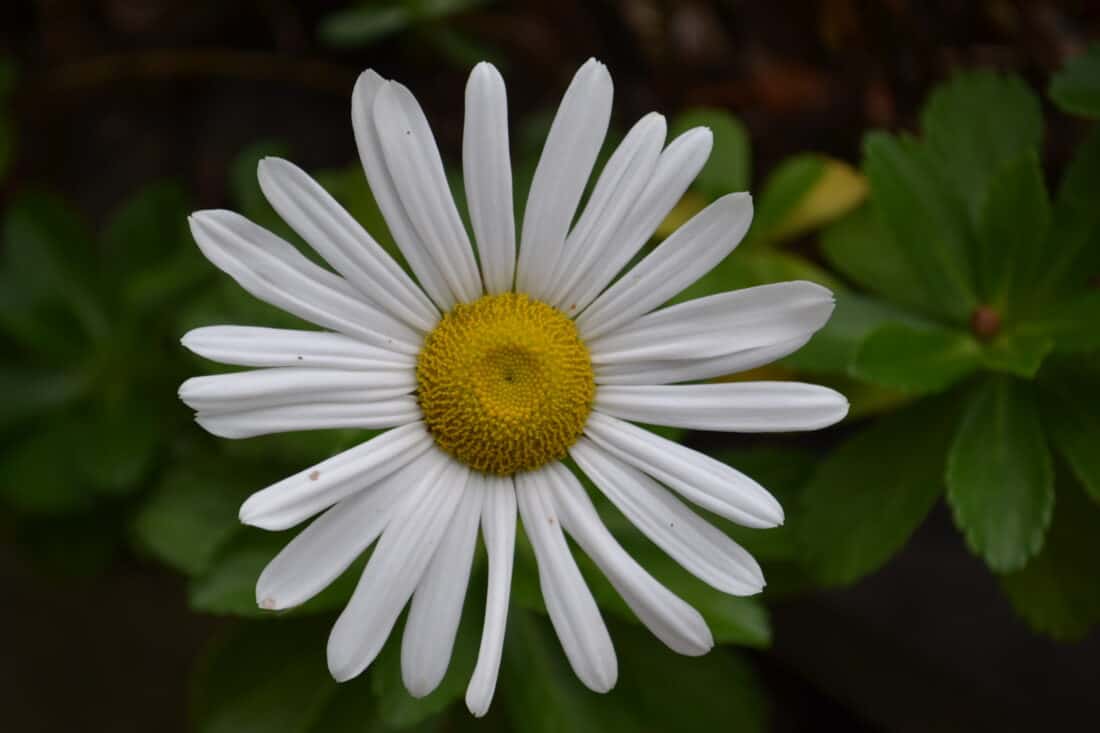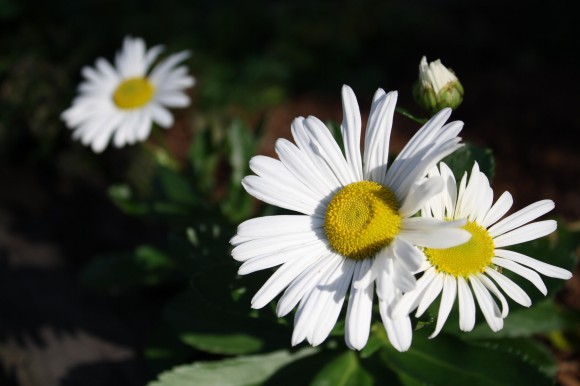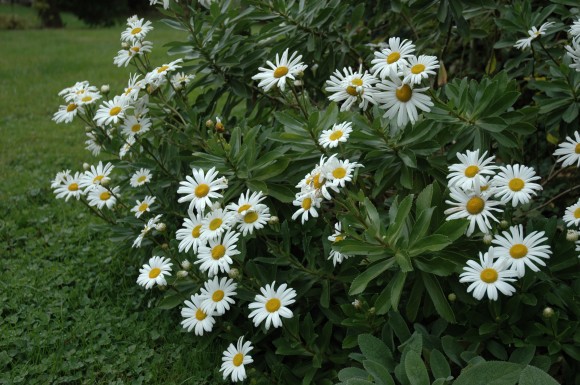The Japanese flower from Japan—that’s literally what the Latin name Nipponanthemum nipponicum translates to in English. I like to imagine the botanists who named this plant had a wicked sense of humor, or maybe they were just feeling particularly literal that day.

Japanese Daisy – locally known as Montauk Daisies
Latin name aside, this week’s plant is new to me—a discovery I made after moving to coastal Maine. We live in East Boothbay, just a block from the East Boothbay General Store. Right after we moved into our home in September 2012, we made many morning trips to the General Store for breakfast while we were still unpacking. I vividly remember one of our first walks to the store when I noticed a plant growing alongside Route 96. It had glossy, dark green foliage, and for a moment, I thought it was Pittosporum tobira, a plant I knew from my time further south. But this shrubby plant, about 3 feet wide and tall, seemed too hardy for Maine’s USDA zone 6 climate—and that piqued my curiosity.

I snapped a picture with my iPhone and showed it to my new colleagues at Coastal Maine Botanical Gardens. Without hesitation, they identified it as a “Montauk daisy.” A few weeks later, in early October, the same plant outside the General Store burst into bloom, covered in bright white, daisy-like flowers. I was struck by how tough and beautiful it was, a perfect plant for an autumn display. I started asking around why more people didn’t use this plant along the coast, but most responses were shrugs. One person suggested, “Maybe it’s overused around Cape Cod.” Perhaps, like the overdone red-tipped Photinia in the South, Montauk daisies had simply fallen out of fashion in coastal New England.
Designin with nippon daisy
But from a design standpoint, I think these plants are fantastic. The large, rounded, leathery leaves are succulent-like and paired with the crisp, white flowers create a striking contrast that’s both bold and elegant. Their late-season blooms are a welcome sight when much of the garden is starting to fade. Interestingly, the Montauk daisy played a role in horticultural history as one of the parents Luther Burbank used to create the famous Shasta daisy. Burbank, a horticultural legend, first hybridized several daisies without achieving his ideal plant. After selecting promising hybrids, he crossed them with Nipponanthemum nipponicum, and one of those crosses eventually became the Shasta daisy.

While Shasta daisies are lovely, I recall them seeding themselves a bit too enthusiastically when I lived in the South. In contrast, the Montauk daisy has a more shrub-like form with slightly smaller flowers but just as much charm. They’re hardy from USDA zones 5 to 9, tolerant of full sun, and once established, they can handle drought—making them an excellent choice for coastal and tough garden spots alike.
When you see a Montauk daisy, what are your initial thoughts? Do you think they deserve a spot back in the spotlight, or are they best left as a nostalgic nod to gardens past? For me, they’re a reminder that sometimes the most overlooked plants are the ones that surprise us the most—just like finding a little piece of horticultural history growing beside a roadside general store.
– Rodney
Images: Land Perspectives, A Garden For All
I wonder how these do in the heat? Shasta daisies wilt every day all summer.
Good question, Debbie. I never saw them in the south so I do not know.
Rochelle
I love these Daisies and like you said they are quite unusual. I call them the Nippon Daisy and the foliage is wonderful and almost succulent like. It is not a well know plant.
Thanks, Claire!
Definitely not crazy. On the contrary, the Montauk is indeed spectacular. I love the structure of the plant and the foliage form. We’re very fond of daisies, and have Oxeye daisies all round our garden in summer, which have a very similar flower. Of course they’ve all gone for the winter now, so we scatter the sculpted daisies we make around instead to cheer up the garden until spring!
Good to know, Richard!